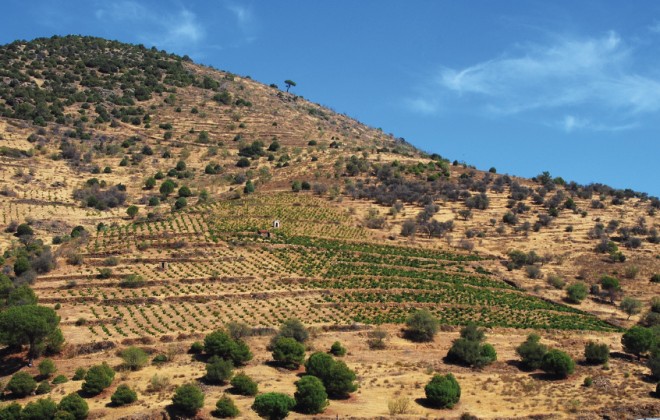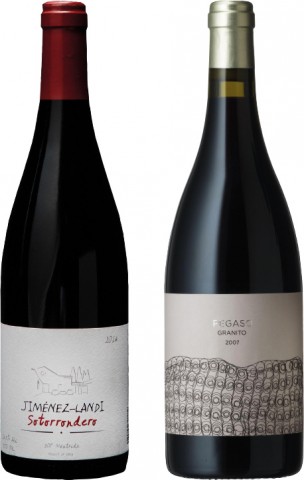Despite its close proximity with Madrid by auto and rail, Spain’s ‘Sierra de Gredos’ wine region is relatively unknown to the informed wine pro. Its establishment as a modern wine-producing dates only to the 1990s while the economic difficulties beginning in 2008 crippled these nascent efforts, and the occasional infighting, inability or unwillingness to embrace contemporary marketing methods, a lack of an identifiable Denomination of Origin or dynamic independent body to organize group efforts have prevented the hard-working and visionary vignerons and bodegas with unique wines from their deserved recognition.

Here old vine Garnacha and the autochthonous white Albillo Real, most often organically grown, are commonly vinified without added yeasts in large oak barrels and in clay jars here called ‘tinajas’. The villages of El Tiemblo, El Barraco, Cebreros sport quiet forests and meadows, much steep soils composed of granite/schist/slate/sand, and a warm continental climate at 650m-1300m. Wines are generally regulated by law within the Vinos de la Tierra de Castilla y León though Gredos extends into three provinces--Ávila (all labeled VdT CyL), Madrid (D.O. Viños de Madrid), Toledo (D.O. Méntrida).
The area’s transverse Alberche valley is dominated by granitic sand with its western portion possessing the most mountain influence from altitude, diurnal variation, and a slight shadowing from rains originating from either south or north. Schist soils exists at El Tiemblo, Cebreros, and El Almendral though are less black than in the Douro, more tan due to the presence of iron, feldspar and yellow-brown granite.

Garnacha here is dissimilar from those in southern France and SE Australia by being more acidic and tannic due to its higher elevation and nutrient-devoid granitic soils. Various clones of Garnacha exist in the rustic Gredos area as they do in other regions. Harvests occur late September through the third week in October, with some vintage variation occurring, though with the predominance of old vines this problem is more mitigated than in many wine regions.
The maturation of these wines aren't about releasing fruit following a 'tannin fade' but rather showing tertiary characteristics of forest floor and plants following five years from vintage. The higher altitudes and northern exposures, such as those of El Tiemblo and Peña Caballera, are exemplary for Garnacha.
A self-imposed ‘Garnacha de Gredos’ qualification stipulates all Garnacha and Albillo grapes must be organically grown, plowing done to remove weeds and replenish soils with nutrients with horses used when available. Producer Fabio Bartolomei says that "because of the varieties, the mountains, the soils this is a hidden treasure of an undiscovered region. Even the locals who make sweet wines at 17% aren't aware of this potential." He went on to explain the link of the refurbished coop winery in El Tiemblo he shares with noted grower Daniel Ramos to the tragedy of this area from yesterday to today. "The bulk wine industry in this area is disappearing. With prosperity people want nice wines with a sense of place, and these compete with cheaper and better easy-drinking table wines." The area’s best known figures are the Jiménez-Landi partnership and Telmo Rodriguez's Pegaso brand.
David Furer
Discover more about the best bodegas of this area on our website : www.sommeliers-international.com